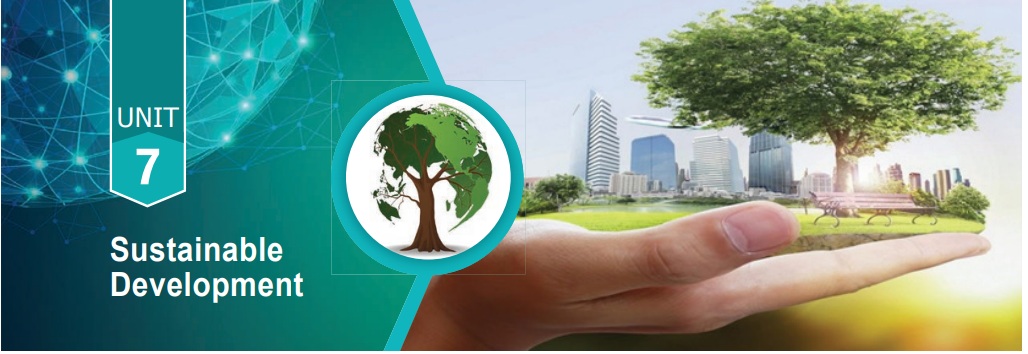Geography - Sustainable Development | 12th Geography : Chapter 7 : Sustainable Development
Chapter: 12th Geography : Chapter 7 : Sustainable Development
Sustainable Development
Sustainable Development

Learning Objectives
* To describe the importance of Sustainable Development.
* To highlight the interconnectivity between man, environment and economic growth.
* To understand the United Nations Sustainable Development Goals.
* To underline individual's role in creating a sustainable earth.
Introduction
In the last few centuries there has been a drastic change in the lifestyle of man. Agricultural growth, industrialization, urbanization, rapid advancement in science and technology have decreased mortality rates and caused rapid growth of population over the earth. With increase in population there is an increase in the demand for natural resources leading to overuse, of nature and its resources. Nations began to wake up to the fact that the earth’s resources are depleting at an alarming rate and that something has to be done to sustain them. This led to develop the world in a sustainable way. Sustainability is supported by four pillars which are cultural vitality, economic health, environmental responsibility and social equity. All nations in the world focus on sustainable development as a major task.
United Nations and Sustainable Development
Sustainability was first featured in the principles adopted by the United Nations Conference on the Human Environment held at Stockholm on 16 June 1972. It was now realized that development needed to be sustainable – it should not only focus on economic and social matters, but also on matters related to the use of natural resources. The United Nations commissioned a group of 22 people from both developed and developing countries to identify long-term environmental strategies for the international community. This World Commission on Environment and Development (WCED), was headed by Gro Harlem Brundtland, then the Prime Minister of Norway. This commission came to be known as the Brundtland Commission, which submitted its report, entitled Our common future, to the UN in 1987.
The Brundtland Report focused on the needs and interests of humans. It was concerned with securing a global equity for future generations by redistributing resources towards poorer nations to encourage their economic growth in order to enable all human beings to achieve their basic needs. The report highlighted the three fundamental components of sustainable development, the environment, the economy, and society, which later became known as the triple bottom line.
The 1992 and 2002 Earth Summits held at Rio de Janeiro and Johannesburg were the United Nations Conference on Environment and Development (UNCED), a direct result of the Brundtland Commission. An important achievement of the Rio summit was an agreement on the Climate Change Convention which led to the Kyoto Protocol..
The United Nations Conference on Sustainable Development (UNCSD), also known as Rio 2012, Rio+20 or Earth Summit 2012 was the third and recent International conference on sustainable development. It was hosted by Brazil in Rio de Janeiro from 13 to 22 June 2012.
Related Topics